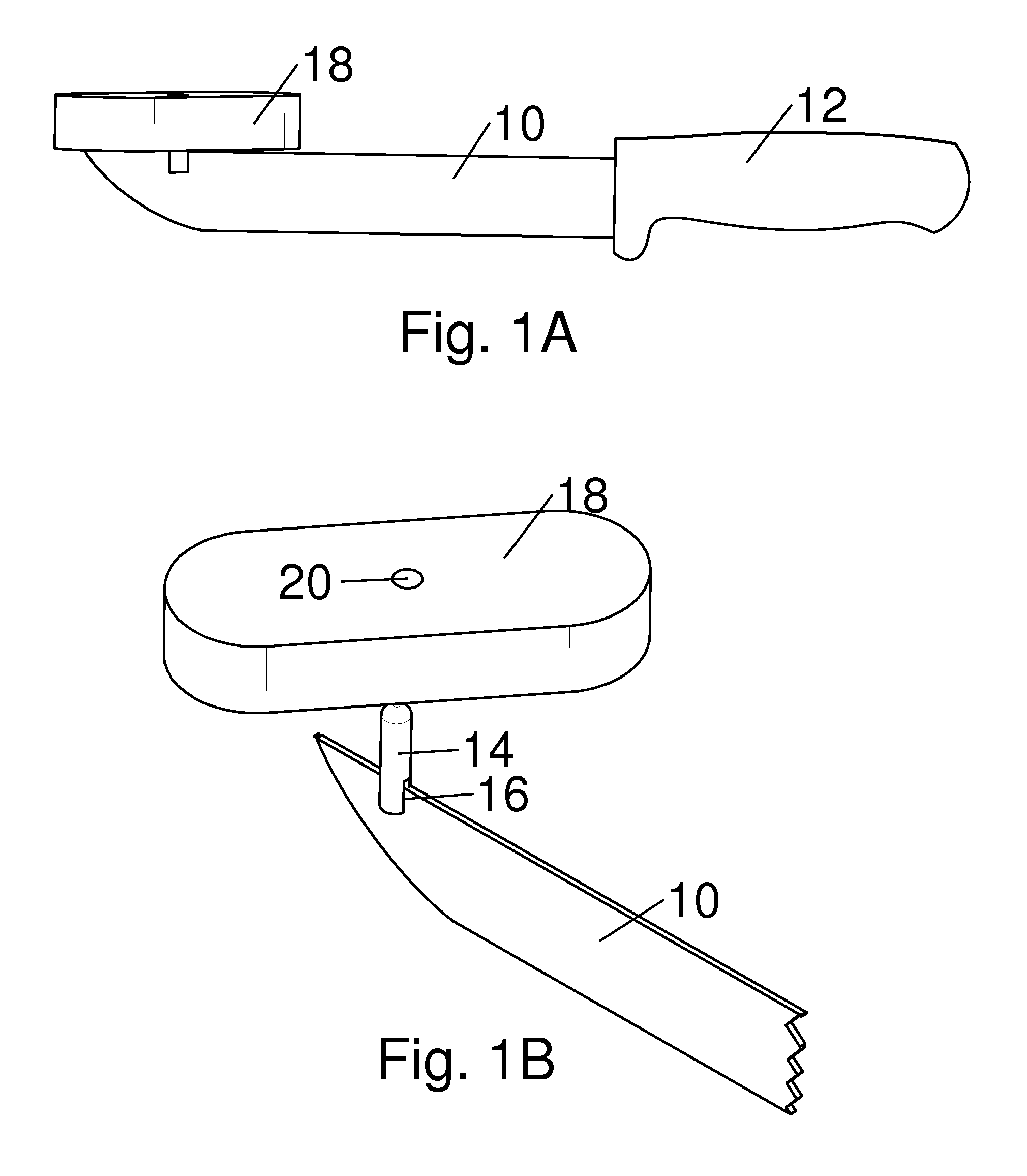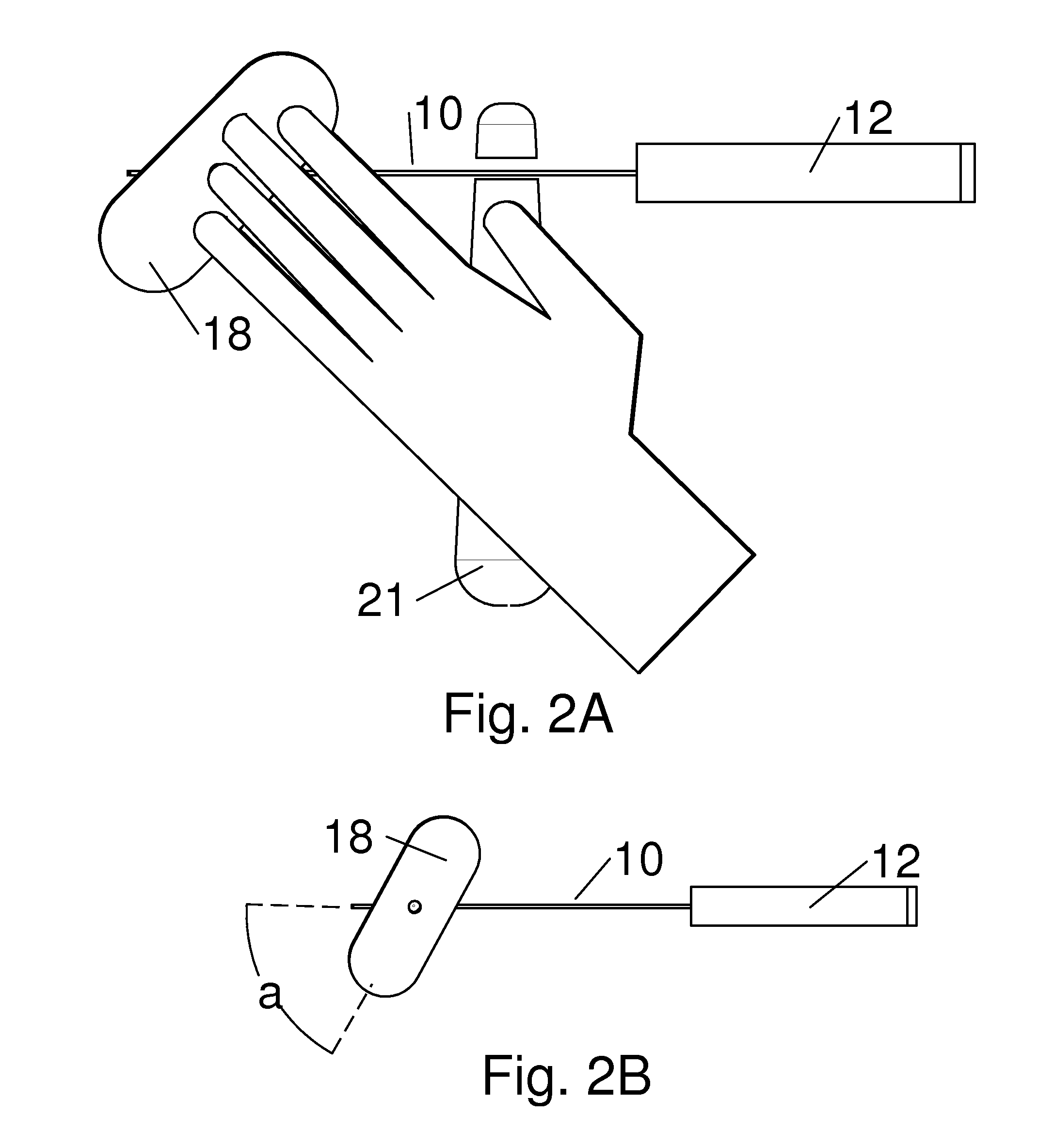Double Handle Kitchen Knife
a technology of kitchen knives and handles, which is applied in the field of double handle kitchen knives, can solve the problems of hand and wrist fatigue, difficult cleaning of the knife blade, and difficulty in cleaning the knife blade, so as to facilitate one-handed operation of the knife, the effect of easy cleaning and sharpening
- Summary
- Abstract
- Description
- Claims
- Application Information
AI Technical Summary
Benefits of technology
Problems solved by technology
Method used
Image
Examples
main embodiment
—FIGS. 1A and 1B—MAIN EMBODIMENT
[0089]The main embodiment of the present invention is illustrated in FIGS. 1A and 1B: fully assembled in side view in FIG. 1A and a front close up in FIG. 1B. At the back of blade 10 a primary handle 12 is fastened (FIG. 1A). Primary handle 12 may be of conventional design. A pivot post 14 (FIG. 1B) of stainless steel round bar is slotted 16 to fit over the top front of blade 10 and fastened by riveting, spot welding, soldering or other permanent means. A simple version of secondary handle 18 has a length preferable greater than three inches to enable all four fingers (thumb excluded) of the non-dominant hand to press down on it and a width having sufficient surface for the fingers to comfortably press down on but preferably less than two inches as wider widths introduce unnecessary side load as discussed below for the primary operation of the main embodiment.
[0090]Secondary handle 18 may be wooden or plastic, smooth or with finger slots on top and ha...
PUM
| Property | Measurement | Unit |
|---|---|---|
| fixed angle | aaaaa | aaaaa |
| fixed angle | aaaaa | aaaaa |
| angle | aaaaa | aaaaa |
Abstract
Description
Claims
Application Information
 Login to View More
Login to View More - R&D
- Intellectual Property
- Life Sciences
- Materials
- Tech Scout
- Unparalleled Data Quality
- Higher Quality Content
- 60% Fewer Hallucinations
Browse by: Latest US Patents, China's latest patents, Technical Efficacy Thesaurus, Application Domain, Technology Topic, Popular Technical Reports.
© 2025 PatSnap. All rights reserved.Legal|Privacy policy|Modern Slavery Act Transparency Statement|Sitemap|About US| Contact US: help@patsnap.com



